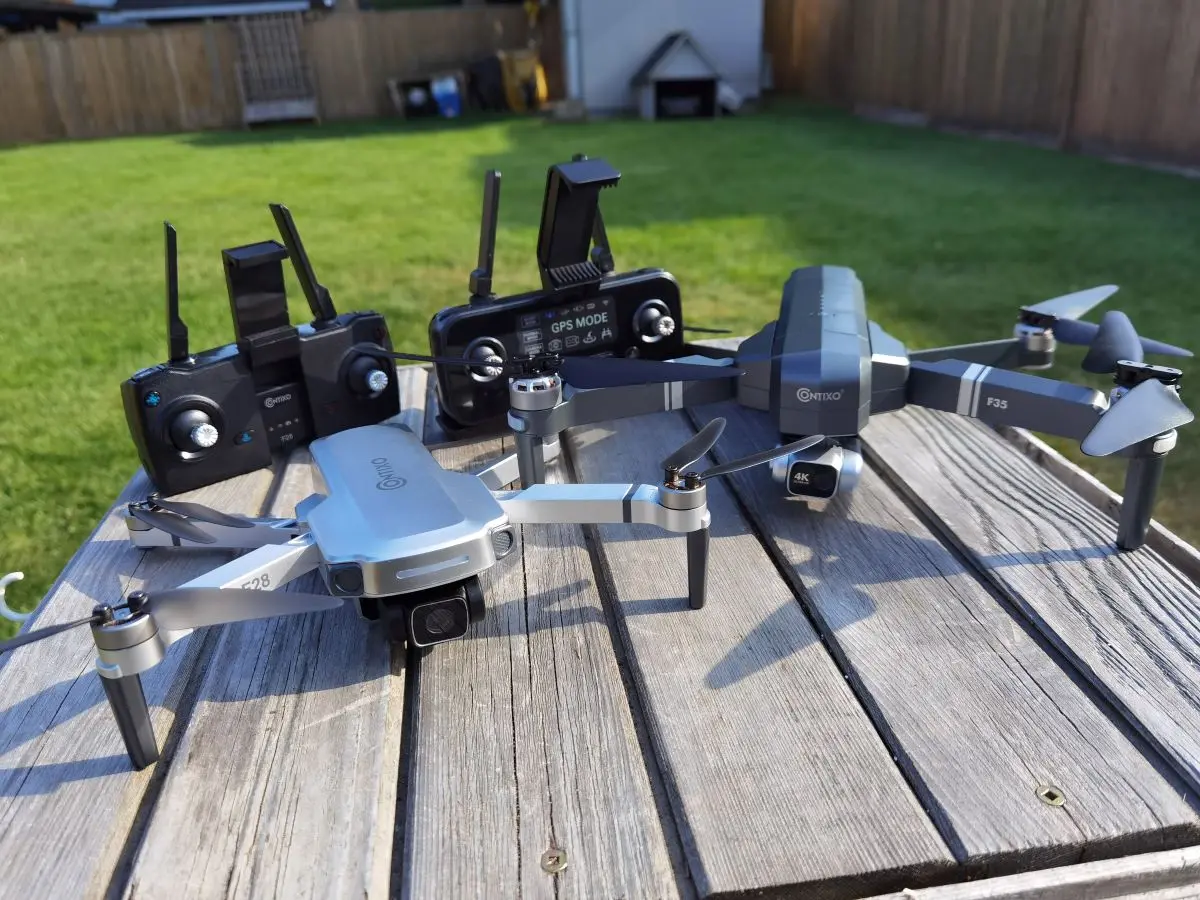
I have a confession to make. Despite reviewing consumer electronics professionally for the past 13 years, I’ve never flown a drone. I once saw my friend drop a drone and it traumatized me. Since then, I never had the urge or desire to try to fly a drone, especially in urban environments. No way Jose.
Well my no-drone streak just ended because I reviewed two drones from Contixo, the F28 drone and the F35 drone. Both are foldable and come with a carrying case and a dedicated controller with a smartphone mount. With features such as GPS control and live video transmission, have I finally overcome my drone PTSD by using these two drones? Let’s find out, starting with their design.
Design of the Contixo F28 and F35 drones
The Contixo F28 and F35 are both designed with portability in mind. Both come with protective carrying cases. Inside, the drone and the controller have dedicated homes with fitted slots. Design-wise, there are many similarities between the two drones. First, they are both foldable and retract open. Without reading the instructions, I figured out how to open and close each drone. Second, they both offer a self stabilizing gimbal. This ensures smooth video recording during a variety of movements. Both drones transmit live HD video over Wi-Fi connection to a smartphone. The F28 provides 2K footage while the F35 records in 4K at 30fps.
One thing that puzzled me was that the entry-level F28 model charges via USB-C. However, the F35, the more advanced model, charges with a micro-USB. I’m surprised to still see micro-USB in 2023.
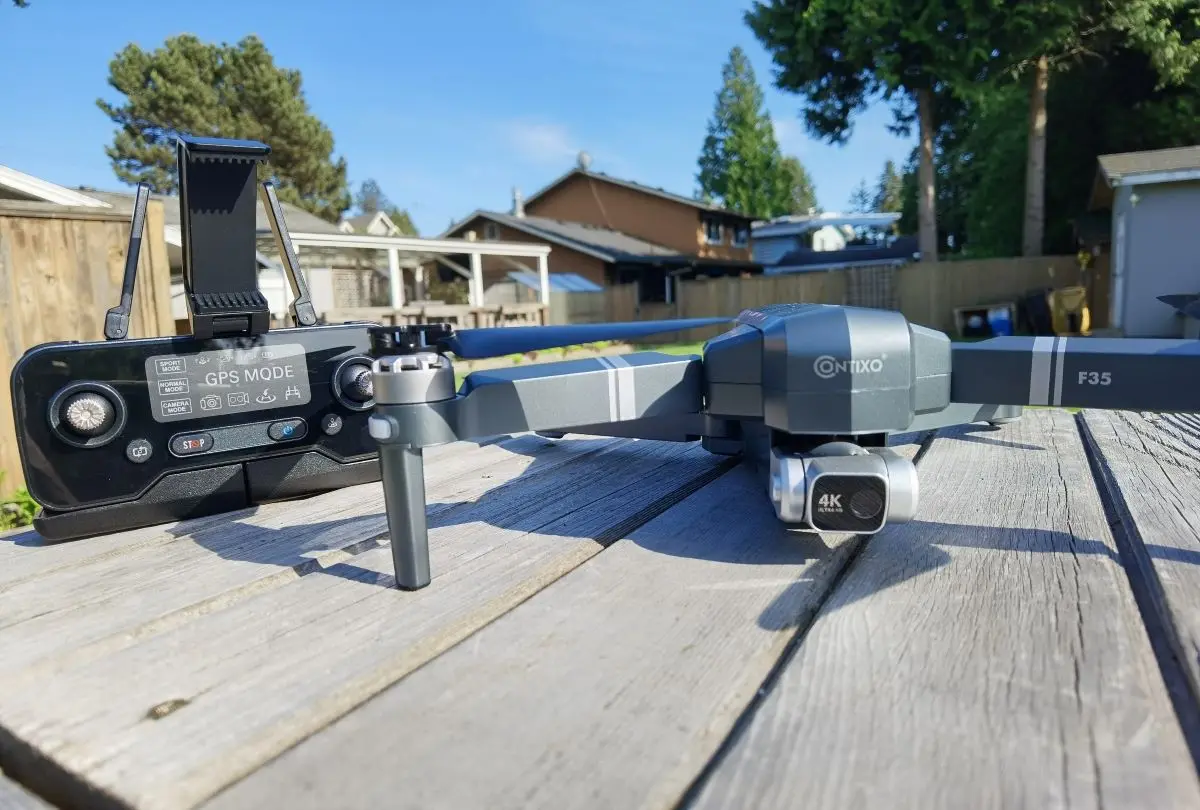
Both drones were easy to transport with their carrying case. I was able to get both cases into my backpack to take to a nearby open location for testing. Unfolded, the F28 measures approximately 10.5” x 12” x 2” (LWH) and weighs 271 grams. Folded down, it measures approximately 5.5” x 3.5” x 2”. The F35 is considerably larger and heavier. Unfolded, it measures 17.5” x 16” x3” (LWH) and weighs 585 grams. Folded down, it measures approximately 7” x 4” x 3”.
Drone charging and flight time
Here’s when I learned that it takes days not hours to test drones. There is a wide gap between the charging time and actual flight time. Both models take about 4 hours to fully charge and their flight time is approximately only 30 minutes. Thankfully, non-recreational users like videographers can purchase additional batteries if required.
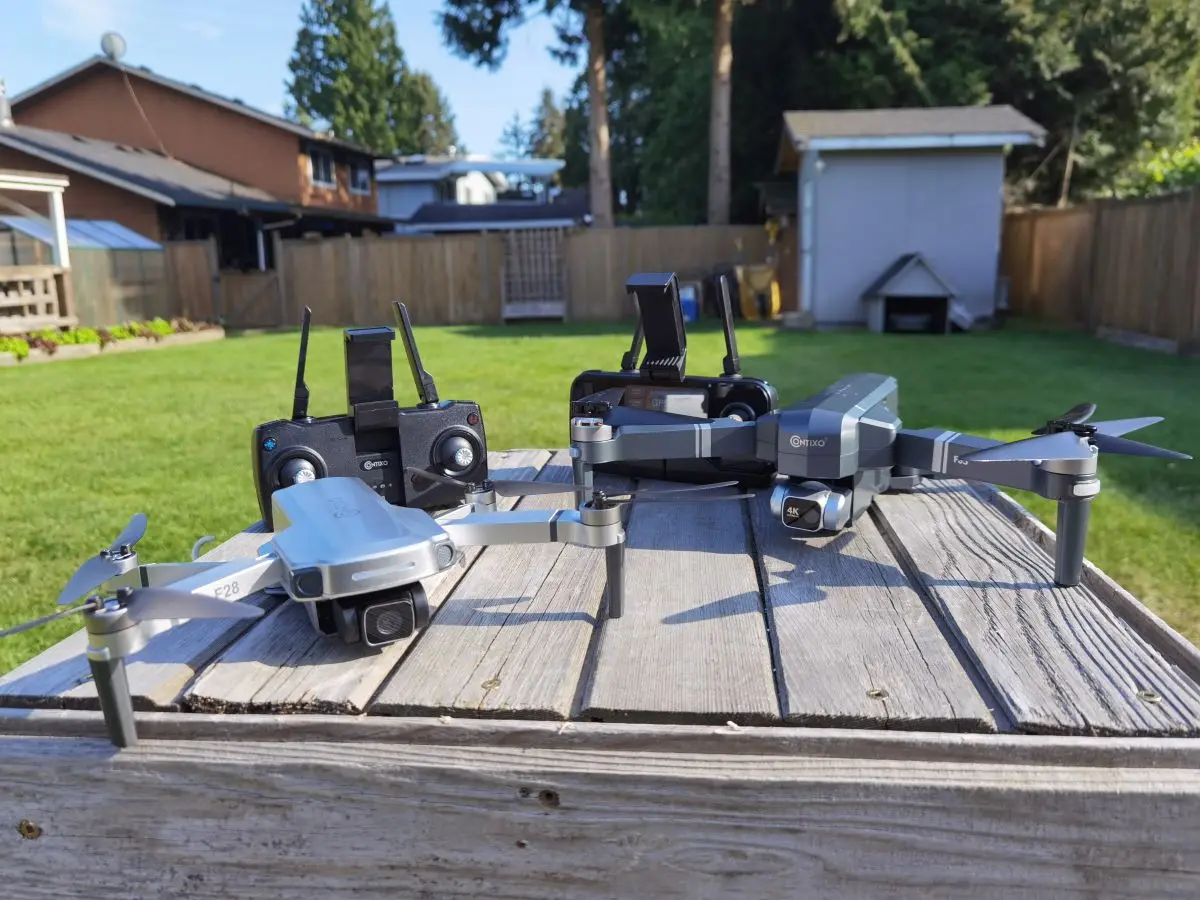
Setting up the Contixo F28 and F35 drones
The first thing I did was download the corresponding drone apps on my smartphone. The Contixo F28 and F35 each have their own separate app. Nevertheless, the setup and app interface is essentially the same. After turning the drone on, I connected to the drone Wi-Fi network. Video is transmitted by Wi-Fi so it needs that connection between the two devices. This is where I ran into some issues. Sometimes I was connected to the Wi-Fi network but the app said it was not connected. The solution was to forget the Wi-Fi network and start a fresh connection. My troubleshooting intuition helped me out with that one.
From there, I turned on the controller and it connected to the drone. I placed my smartphone into the holder on the controller. Here’s where I ran into another issue. The phone holder wanted to sit on the power and volume buttons on my Pixel 7. The remedy was placing it a little off-centre. However, in my case, the F28 controller could barely hold the phone in. It constantly came out since it was situated off-centre. It was a tight fit, I had to really work to get my phone secure. I didn’t have the same issue with the F35 controller. My phone fit securely into the controller, even with it sitting off-centre.
Calibration
Here’s where I learned another thing about drones—they need to be calibrated. There’s two procedures for horizontal and vertical compass calibration. For horizontal calibration, I held the drone in my hand and spun clockwise in one full circle. I repeated that for vertical calibration except I held the drone facing down. I should note that I couldn’t understand the calibration instructions on the app. Instead, I found a YouTube video showing the calibration steps for Contixo drones and then I understood the procedure and the drones were ready for operation.
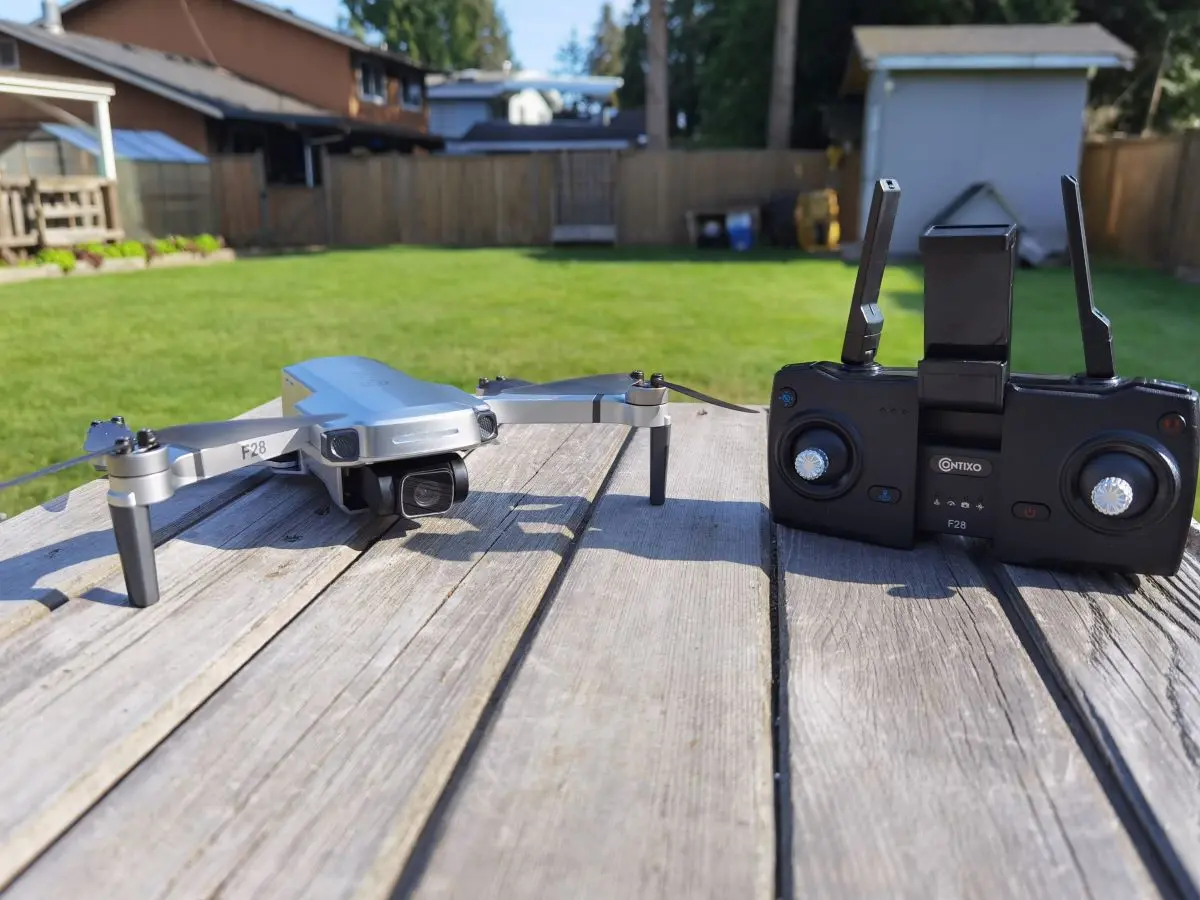
Flying the Contixo drones
As I mentioned in the beginning, I’ve never flown a drone before. To be safe, I first tried it in my backyard. I started with the F28 since it is the entry-level model. Also on the box, it said ages 14 and up. That gave me confidence I could fly it.
My backyard is large with garden beds full of fresh vegetables I could film. After following the take-off procedures, both drones lifted off my jump rope bistro stand. They sat in one place until I moved them with the controller. To be honest, the controls were intuitive. It felt very familiar, like two things from my past. First, the remote control truck I had as a kid. Flying a drone for the first time felt like much the same experience, so I can see why kids would want a drone. Second, it felt like playing a video game. I played a lot of flight simulator games as a teen, and it felt the same.
Within no time, I started to feel comfortable flying each drone and filming my vegetable garden up close. But just as I was getting the hang of the controls, the drones ran out of battery. 30 minutes with a drone can ‘fly’ by quickly, especially if you’re in the learning phase.
‘Follow me’ feature
The next day I tested both drones in an open area nearby my house. Both drones have the ability to follow a person or object using AI tracking, so I wanted to test it with a bike. This can be done in two ways. One is through Object Follow. As the drones were filming me, I drew a square around me on the live feed on the smartphone. Then I biked around, and both drones rotated to keep the camera positioned on me. However, they didn’t move from their location. I’m not sure if I did something wrong but I couldn’t get the drones to move around with Object Follow.
The second method is GPS Follow Me. The drone follows the GPS coordinates set by your smartphone to follow you wherever you go. This is where I realized that getting drone shots while riding a bike is tougher than I thought it would be. Thankfully, I was testing in an empty, open area where I could ride around with my smartphone in one hand. With this feature, the drone moved around with me. I would ride fast right under it and it would move and follow me. However, there were times where it got really close to me. I think that has to do with the fact that I was moving fast with a pedal-assist electric bike.
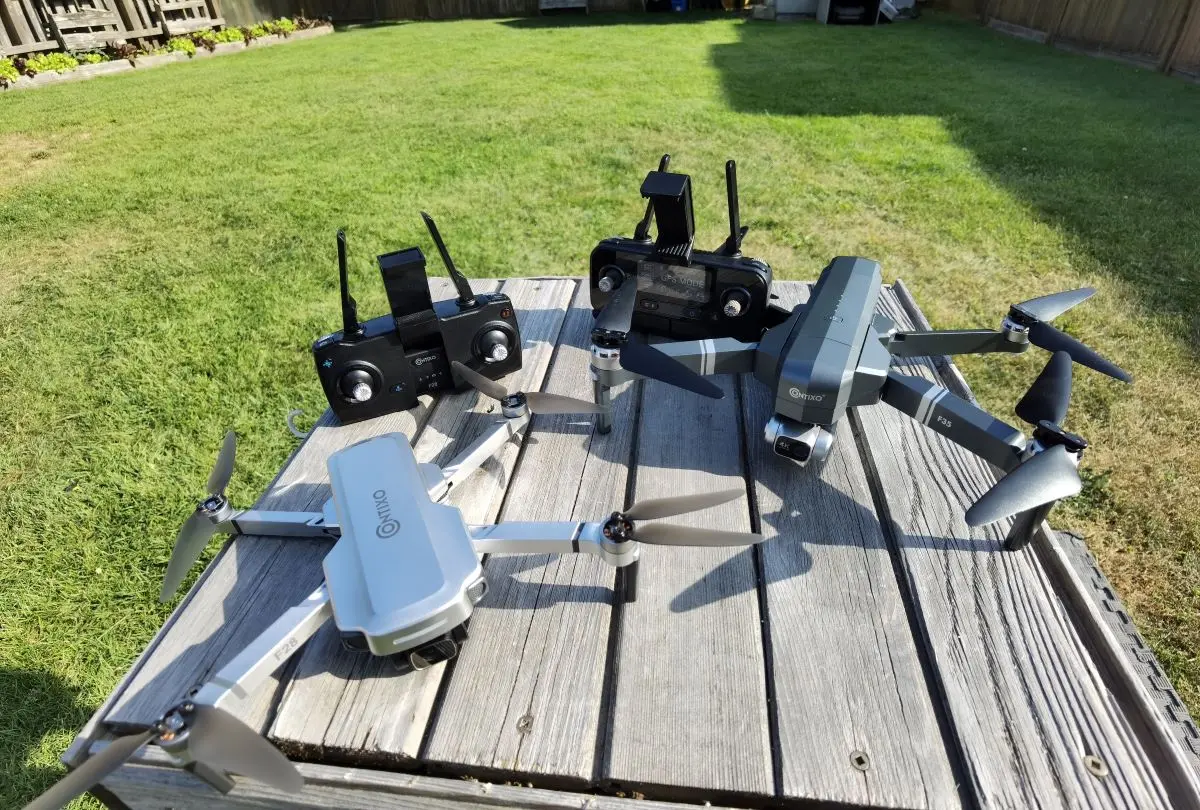
Who are the Contixo F28 and F35 drones for?
If I can fly a drone, anyone can. The Contixo F28 and F35 drones are easy to use and intuitive. My fears of flying a drone were quickly alleviated. Plus, it was a lot of fun. I literally felt like a kid again. 10 year old Andy would be all over this. Heck, middleage Andy is all over this. Give me a month and I will be a master drone operator.
That said, the F28 is definitely the entry model of the two. It’s perfect for kids and beginners. The video looks good and it’s easy to operate. But if you’re a budding videographer, the F35 is for you. The 4K video footage is a big step up and even a beginner drone operator like myself was able to get some good shots. Simply put, there’s a lot of fun to be had with both these drones. However, check with your local laws to ensure you only fly it in permitted areas. If you want to learn the ins and outs of drone operation, there are courses available on bestbuy.ca too. This drone buying guide is also a good start to learn all about the world of drones.
If you’re ready to take the plunge into the world of hobby drones, I recommend you check out the Contixo F28 and F35. They’re affordable, fun, and easy to operate.



